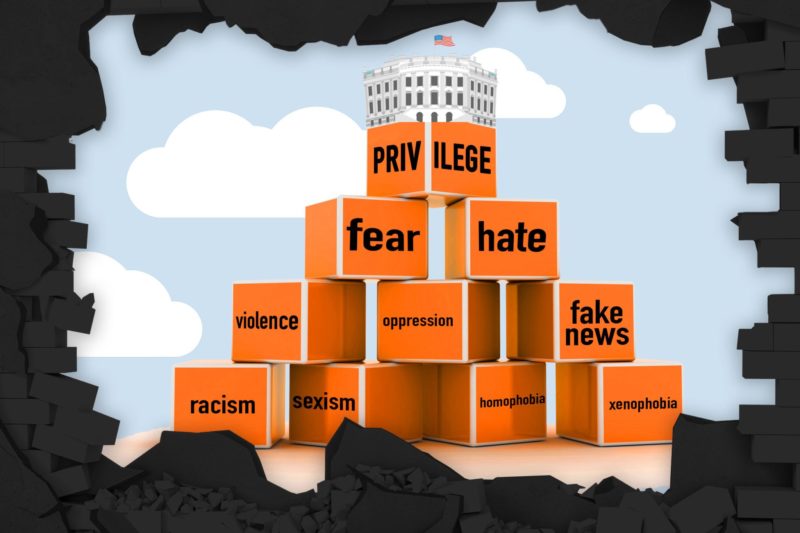The Breach: The Symbiosis of Donald Trump and The Worst People in America
Author Jared Yates Sexton dissects the way Donald Trump’s brand of cognitive dissonance and unreality is empowering right-wing extremism across the United States.

Subscribe to The Breach in Apple Podcasts, Google Play, Stitcher, or Soundcloud.
In the newest episode of The Breach, author and professor Jared Yates Sexton joins host Lindsay Beyerstein to dissect the way President Donald Trump’s brand of cognitive dissonance and unreality is empowering right-wing extremism across the United States, and how he harnessed those dark cultural and political forces to take the White House.
An edited excerpt:
Lindsay: The big party game right now in political circles seems to be saying, “Is it economic anxiety, or is it racism, or is it a false dichotomy?” What do you think?
Jared: It’s both. I think the biggest problem is when people say that it’s “economic anxiety.” I think that what they’re doing is they’re undermining the fact that that turns into something. Economic anxiety doesn’t just stay where it’s at. We definitely have, in our system, racism. We’ve had racism there for as long as we’ve had an America. So, for instance, when my family, who is racist a lot of the time and has been for years, when they are feeling the squeeze, their racist tendencies intermingle with that “anxiety.” And it makes it worse, especially when there’s somebody like a Donald Trump or the Republican Party, to be honest, tells them that the problem is with a different group of people. “These people are taking your money. They’re taking your opportunities. They’re the ones who are making your life hard.” When those two things come together, I think, is when you have this volatile cocktail that we’re seeing right now.
Lindsay: What are some of the ways that Trump stoked white supremacism and extremism amongst his followers and legitimized that kind of stuff?
Jared: I’ve had a lot of people in interviews ask me if Donald Trump is racist himself, and I believe he is, but he is also racist in the way that a lot of my relatives are racist, which is they do not believe themselves to be a racist. They say a lot of things which are, “I’m not racist, but …” or, “This is gonna sound racist, but I don’t mean it that way.” I think Donald Trump basically spoke this language that said racist things without saying that they were racist, which I think gave an excuse to a lot of people. It gave voice to a lot of people who simply believe that’s the way that the world works, right? You get rid of political correctness and, instead, you’re talking about the world as it actually works. I think that that happened, but then you also had, when Steve Bannon came onto his campaign, I think that the message of campaign was actually synthesized and boiled down to specifically reach out to white nationalists. We had language about white nationalism, about economic nationalism. He started to do that, and on top of it, he started to retweet them. His social media director started looking for pieces from white supremacists, and so we actually had a pretty sophisticated outreach population that got these people invigorated and gave them power and strength. I think that, in a lot of ways, that wasn’t on accident.
Recommended Reading:
“A Most American Terrorist: The Making of Dylann Roof,” by Rachel Kaadzi Ghansah for GQ, August 2017
